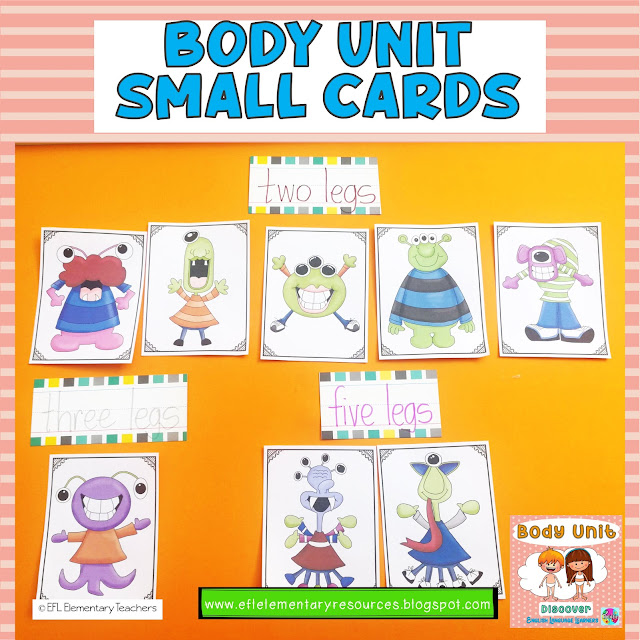This resource is included in the Body Unit for Elementary ESL. Link: https://www.teacherspayteachers.com/Product/Body-Theme-for-Elementary-ELL-1836555
The body unit small cards are visually appealing
with a size that fits comfortably in small hands. Plan fun and interactive activities,
helping your students to expand their vocabulary and language skills.
Play a matching
game. Cut the word from each card and match the picture to the word.
Practice a matching
action game using the verbs small cards.
Say: write! Write with your hand!
Students will
mime writing and say the phrase: write
with my hand!
Continue with
all the cards available.
Use
Monster small cards for sorting the parts of the body in each one. The
Monsters come with different features to represent various body parts. For
example, a Monster has three eyes and another has just one. The Monsters are
fun looking to engage the students.
Decide
on the sorting categories and write them down on strips of paper. Sort the
monsters by the mnumbers of eyes, arms, fingers, hands, legs, feet.
Sorting
by number of feet.
Sorting
by number of eyes.
Sorting
by number of fingers.
Sorting
by number of hands.
Sorting
by number of legs.
Sorting
by number of arms.
Distribute
the small cards in small groups and have the students create a Venn diagram
contrasting the similarities and the difference between the Monsters.
There
are adjectives used to describe people’s bodies such as thin, fat, tall,
short, old, young. The small cards portray pictures of people with such
adjectives. Ask the students to label the cards with the pictures with as many
categories based on the adjectives to describe people.
So
many things to do with the small cards, I am sure that you will come up with more.
Please share with me!
This
is my other blog for younger students with more ideas, activities and resources
for the body unit.
https://eflpreschoolteachers.blogspot.com/2021/01/body-unit-for-english-language-learners.html





































.png)
.png)










